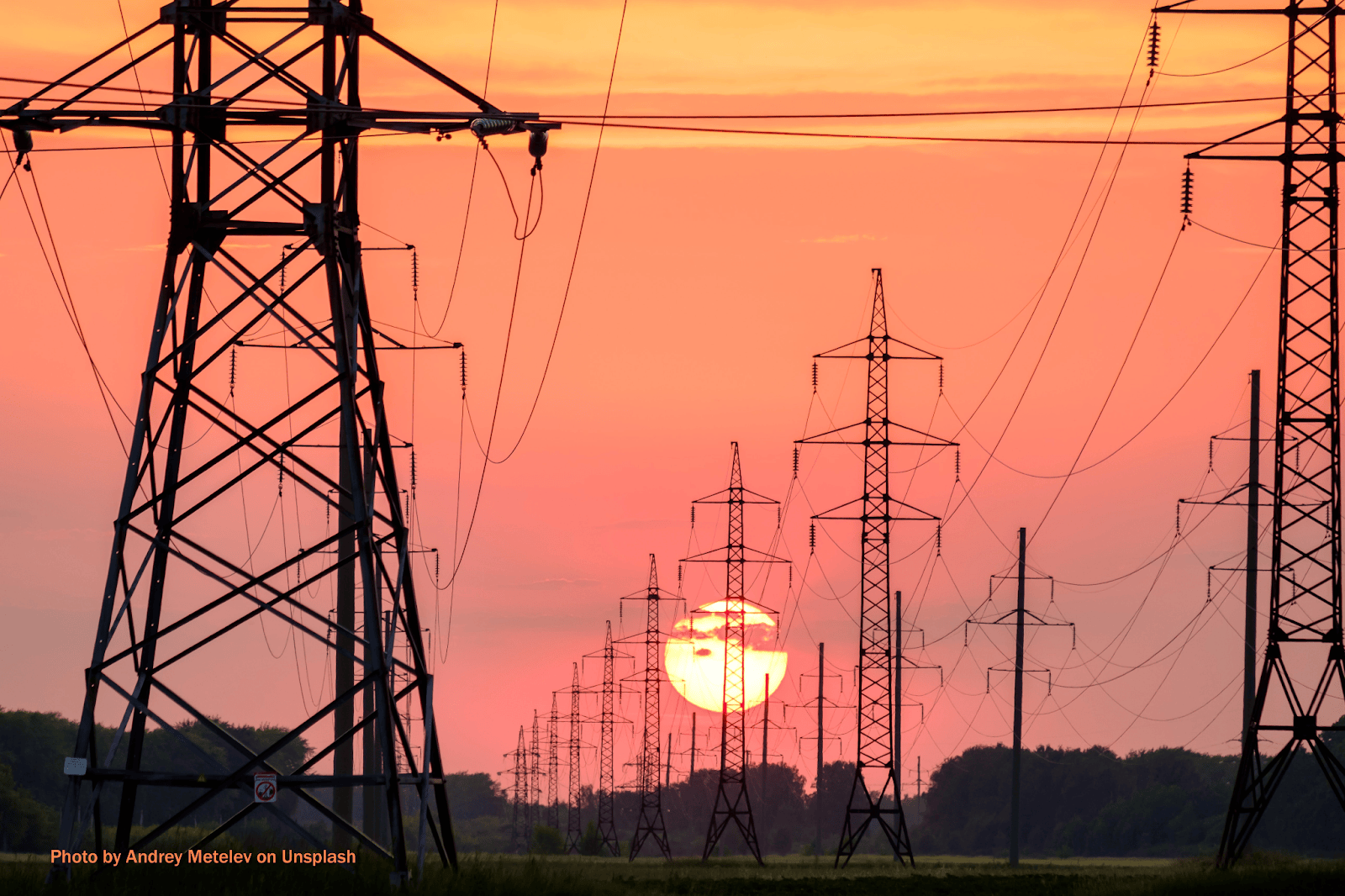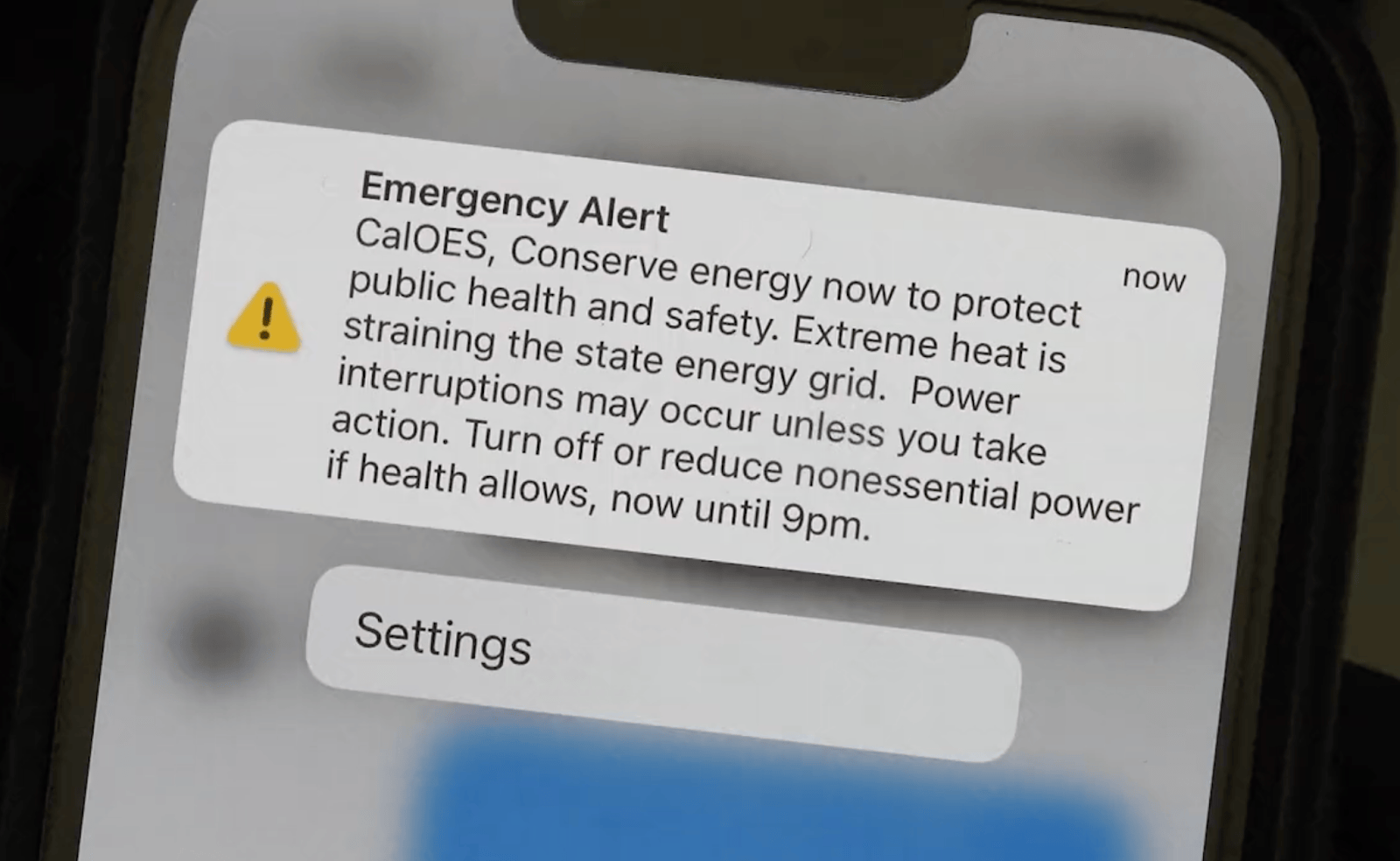It’s Time to Empower Californians to be Part of our State’s Clean and Reliable Electricity Solutions
November 10, 2022
By Nick Chaset, CEO
EBCE leader Nick Chaset proposes four ways to empower customers to help maintain reliability as a changing climate stresses the grid

In September, the entire Western United States faced the most severe heat wave ever recorded. Tens of millions of people, unaccustomed to extreme heat, suffered temperatures above 110 degrees. With the extreme heat came unprecedented demand for electricity across the Western electric grid.
On the afternoon of September 6, something amazing happened. The California Independent System Operator (CAISO), operating an electric grid that serves most of California along with parts of Nevada and Arizona, warned that rolling blackouts were moments away. As the system was close to the limit, the State Office of Emergency Services sent an emergency alert to cell phones in 22 counties asking all residents to reduce electricity consumption.
Millions responded by turning off lights and appliances, discharging home solar and battery storage systems, and raising home thermostat settings. Only with the help of millions of individual consumers, who answered the call to conserve energy, did we avoid rolling blackouts across California.

Changing strategies for a changing climate
Was this help needed because California failed to plan or invest in electric generation? No — it is because our climate has changed.
California is not waiting for help. We are taking critical steps to build new, clean energy resources quickly. In the last two years alone, we have built over 3,000 megawatts of energy storage—enough to power 2.1 million homes. At the same time, we have kept existing electric power plants operating while we bring on even more clean energy. But the climate is changing faster than we expected, and we need a different approach to maintain electric system reliability, affordable and clean.
During the heat storm, three of California’s homegrown clean energy champions, Tesla, Sunrun, and OhmConnect, reported engaging hundreds of thousands of households to deliver a customer-centric clean energy equivalent to three natural gas-fueled, fast-reacting power plants.
EBCE customers were part of that solution. We partnered with Sunrun on our Resilient Home program, to put solar and battery systems on over 1,000 customer homes. By letting Sunrun control their battery to export power to the grid to help manage peak demand, they provided 55 megawatt-hours of power during peak demand periods of 4:00–9:00 p.m. from September 1–8. While EBCE provided a one-time incentive of $500 on enrollment, the customers were not specifically paid for helping avoid blackouts.
Large-scale power generators—including solar farms, large battery banks, or natural gas-fueled power plants—were paid tens of millions of dollars to produce during the times of greatest need. But most consumers received little or no compensation for their efforts.
California’s rules and regulations – governing how demand response, distributed generation, and energy efficiency either participate in the CAISO’s electricity market or provide reliability as part of California’s Resource Adequacy (RA) program – are too complex and punitive.
Empowering customers
Californians have shown the value of our conservation and flexibility. So what should California do to empower regular consumers to participate in energy markets and enhance the reliability of the grid?
First, we need to set stable, long-term rules for demand response. We need to let everyone know how demand response is valued and how it will be evaluated. Then we need to have everyone, including utilities, play by the same rules and with access to the same funding. The future must be a dynamic grid where customers can get paid for reducing their load year-round so we can avoid emergencies in the first place.
Second, the California Public Utilities Commission should not apply punitive grid access charges to customer solar and storage systems that participate in net energy metering. These charges would significantly reduce the adoption of this critical source of clean, reliable electricity that benefits individual Californians and our grid. Instead, any changes to Net Energy Metering should focus on applying a fair value to the energy that these clean energy systems produce.
Third, give customer solar and storage systems their full capacity value to discharge onto the grid. To do this, California electricity regulators should grant customer solar and storage systems a qualifying capacity equal to their full grid interconnection nameplate capacity of the battery, allowing California electricity suppliers to contract with these customers and count these resources towards their resource adequacy (RA) obligations.
Fourth, we need big changes to California’s new Emergency Load Reduction Program (ELRP). With a few changes, it can empower local energy suppliers, clean energy innovation companies, and consumers to be fairly compensated for providing reliable, clean energy to the grid. To do this, the funds currently earmarked for the ELRP should be opened up to all CCAs, Municipal Utilities and Investor Owned Utilities who want to design and deliver programs to deliver zero emission electric demand reductions to the grid during times of system stress.
The California Energy Commission has a promising new $295 million program to pay for emergency load reductions. The Demand Side Grid Support (DSGS) Program will offer incentives of $2 per kilowatt-hour to electric customers that provide load reduction and non-combustion backup generation to support the state’s electrical grid during extreme events, reducing the risk of blackouts. That is welcome, but it may be even better to allow CCAs to run programs that can cut load during emergencies but also be integrated into wholesale markets. In other words, rather than focus on paying customers lots of money to avert emergencies, it might be a good idea to pay them less money more often to change how they’re consuming electricity in the first place, to help prevent emergencies from happening.
We must act now to prepare for the next major weather event and the many more to come. We have the tools. We know what must be done: empower customers to participate and make an impact by providing zero-emission demand flexibility and generation.